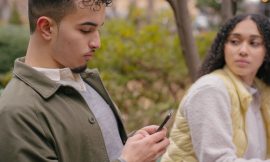Our body is so obvious that we are not even aware of it. Yet it speaks as much as our words or all the methods we put in place. Desmond McGetrick, Director of the MASTÈRE SPÉCIALISÉ® Project and Programme Management & Business Development at SKEMA’s Grand Paris Campus, is inspired by the work of Arawana Hayashi to teach his students: being a leader begins with your body.
It has happened to all of us one day: having gone to an appointment with the feeling your stomach is going into knots or, during a collective moment, having felt “transported” and “energised” by the shared emotion. These are very physical images. Our body speaks to us and it also speaks about us. In everyday life, however, we rarely think about its importance and the messages it sends. Imagine its role in leadership! Why ignore it? Does management have to be a purely intellectual process?
Leadership from head to toe
In my “Leadership and Change” course (aka “Organizational Development”), in the MASTÈRE SPÉCIALISÉ® Project and Programme Management & Business Development at SKEMA’s Grand Paris Campus, I wanted to integrate this dimension of embodiment (embodied leadership) by drawing on the work of Arawana Hayashi. She invented an approach that she calls “Social Presencing Theater”. I discovered her work in the context of “Theory U”, articulated by Otto Scharmer of MIT, and I was lucky enough to attend a two-day workshop with Arawana when she came to Paris last year. In sixteen hours of workshop with her, and in the company of a small group of twenty participants, I was able to experience this physical dimension in my body, my head and on an emotional level.
But how to transmit this holistic dimension to my 223 MS PPM students in the space of barely 24 hours of Leadership and Change classes? I did it in steps:
1. Reshaping the lecture space: trying a circle format
Setting up students in a ‘theatre format’ encourages them to take on the role of student, waiting for instructions from the teacher; whereas setting them up in a circle, without tables, invites them to open up to each other.
The absence of the table leads to the removal of the computer and opens up the view of each other. In an ideal world, mobile phones are placed in a box at the entrance to the room to eliminate the temptation to hide behind the screen, or simply to be tempted by a notification. In this way, attention remains in the room and is open to the presence of other classmates.
2. Start by settling down: make yourself calm
There is, of course, not just one way to do this. For my part, I proposed to my students an exercise in reflection on the morning’s activity, according to the following 3 questions:
- What did I do?
- What did I feel?
- What surprised me?
By preparing this exercise in their heads, or with a pencil and paper, the participants, placed in a circle, become accustomed to their presence with each other. The answers to these three questions can be formulated in the form of a “haiku” (a Japanese poem of three lines), an ultra-brief story that they are invited to share, if they wish, with their neighbour or even with the group.
3. Translating a “leadership” issue into action: the “blocking” exercise (i)
This is one of Arawana’s signature exercises: ask yourself what is “blocking” in your life (in this case your work)? Then experience embodying this blockage with your body. This blockage can be, for example, the famous “knots in your stomach” mentioned above.
This approach is both intimate and very respectful of each person’s private life. Intimate, because for the exercise to be useful, the blockage must really exist; and respectful of privacy, because at no time do the participants share the real nature of this blockage. They simply share the gesture that represents this blockage, each in turn, in small groups of 4 or 5.
4. Letting the body inform the mind: the “blocking” exercise (ii)
Arawana invites us to get rid of this blockage, by inviting the body “unblock itself.” By being truly “present to the body”, the body will find a way to “untie the knot” or absorb the blockage. The only thing left to do is to become aware of how the body removes the blockage and to draw personal conclusions about how to remove or absorb it in real life.
For my part, the blockages that I was able to show the students during the first course were dissolved even before the next course, forcing me to look for yet another blockage point!
5. Becoming aware of the influence of one’s body on others: the notion of the “social field”
Without going as far as the example of the football player or singer who electrifies his fans (and teammates) when he arrives on the pitch or on stage, we all know people whose mere presence changes the atmosphere or the dynamics of an event or a meeting. The challenge here is to realise that we all influence the atmosphere of a group, even before we say a word.
Arawana constructs the activity as an arrival on stage, without saying a single word. And she succeeds in making everyone aware of the ‘message’ they are transmitting as spectators. Whether they like it or not, spectators are involved: their posture and their gaze have an influence on all the members of the group, whether on the other spectators or on the person on stage.
Read also: Theory U: How to accompany students in the face of uncertainty?
At SKEMA Business School, I reshaped the class into a “U” format and proposed that each team (sub-group of 5 people) come in turn in front of the whole class. Each team had a brief content to share: to let people know “where the group was in the progress of a team work”. To complement this message, each team was asked to be aware of their physical presence in relation to the class, and also in relation to each team member. I also encouraged all participants to be aware of their posture, and how they looked at the presenters.
This awareness of the students’ ‘physical presence’ as future project or programme managers enriched a course on Leadership and Change. Without prejudging the other dimensions of the course, the body dimension is another way of connecting to one’s own intelligence and opening up to others. It invites participants to become observers of social interaction and to consider the levers at their disposal (such as the layout of a room) to influence the “social field”.






